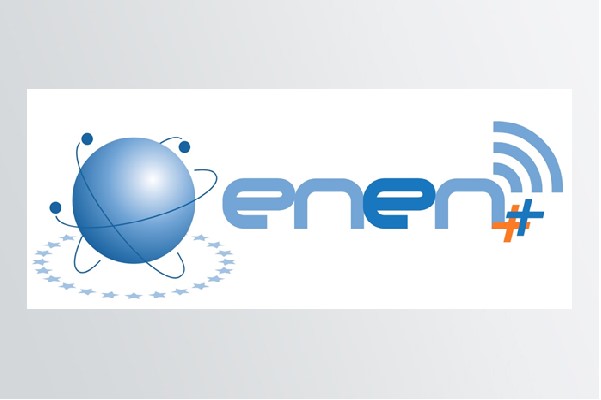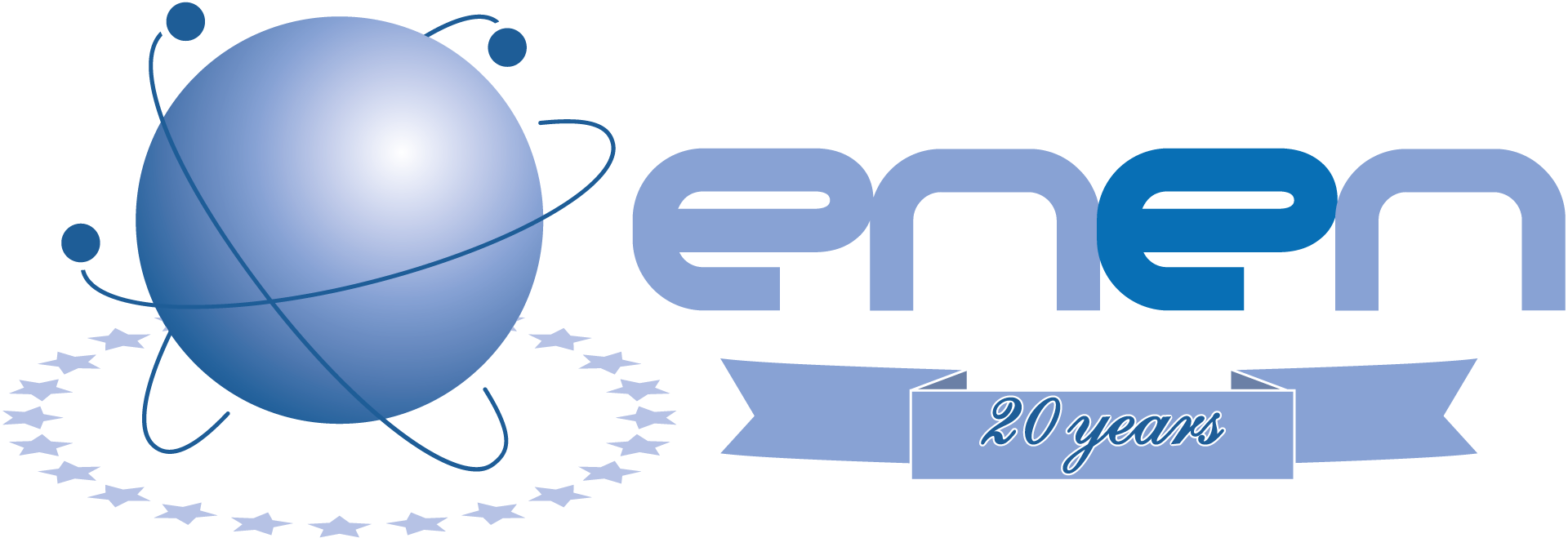Course: Deterministic modelling of nuclear reactor multi-physics
The course deals with the modelling of nuclear reactors, with emphasis on their multi-physics and multi-scale aspects. The course can be followed either on-site at Chalmers University of Technology, Gothenburg, Sweden or fully on-line. The course covers neutron transport, fluid dynamics and heat transfer. This course aims at presenting the main algorithms in the computer codes used by the industry and in academia for the macroscopic modelling of nuclear systems. The underlying methods used in such codes, together with their assumptions and limitations, are thoroughly presented, so that the codes could be used with confidence. During the course, the participants will also have to implement in Matlab some of the presented algorithms to solve some practical problems of relevance for nuclear reactor simulations. The course also includes some hands-on exercises on the Studsvik Scandpower CASMO-4/SIMULATE-3 codes to demonstrate how the algorithms presented in the course can be used for industrial applications.
Dates & Time
- Synchronous Interactive Sessions: March 24-28, 2025
(Start: 09:00 on March 24 | End: 16:00 on March 28) - Self-Paced Phase: Opens January 15, 2025
- The course also contains a self-paced online learning phase that the course participants need to complete before being accepted to the synchronous sessions. The web-based platform used for the entire course opens on January 15th, 2024, at the latest, which is also the date when the participants can start the self-paced online learning phase.
Location
- Onsite: Chalmers University of Technology, Gothenburg, Sweden
- Online: Entire course can also be attended remotely
Registration
- Deadline: December 1, 2024
- Register here: https://forms.office.com/e/Eyzbft4W1K
Fees & Financial Support
- Course Fee: Free of charge
- Participant Expenses: Participants have nevertheless to cover their own expenses (travel, food, and accommodation) in case of onsite participation to the synchronous interactive sessions.
- ENEN2Plus
In case of onsite attendance, participants can also apply for financial support through the ENEN2Plus mobility funds. ENEN2Plus applications should be separately filed on the ENEN2Plus mobility portal in the category “Individual applications”. Please observe that the application for this course and the possible application for an ENEN2Plus mobility grant are two separate process.- Apply here: ENEN2+ Mobility Portal
- ENEN2Plus
Contact Information
Chalmers University of Technology – Department of Physics
Division of Subatomic, High Energy and Plasma Physics
EMAIL: demaz@chalmers.se
Course theme
The modelling of nuclear reactor systems is one of the most challenging tasks in complex system modelling, due to the many different scales and intertwined physical phenomena involved. The nuclear industry as well as the research institutes and universities heavily rely on the use of complex numerical codes, either commercially available or developed in-house. All the commercial codes are based on using different numerical tools for resolving the various physical fields, and to some extent the different scales, whereas the latest research platforms attempt to adopt a more integrated approach in resolving multiple scales and fields of physics.
Even though the sophistication of the codes allows modelling intricate reactor phenomena, the complexity of the tools makes their use difficult. In addition, without proper guidance, users might apply the codes in some erroneous fashion, when for instance the underlying assumptions and conditions in a given numerical method are not fulfilled.
This course aims at presenting the main algorithms used in such codes. The course is not about explaining how to use such software, rather to understand the underlying methods, together with their assumptions and limitations. After completing the course, the attendees will be able to use such codes with confidence.
The unique character of the course resides in tackling neutron transport, fluid dynamics, and heat transfer within the same course. The main techniques are presented in the course in a generic manner (i.e., not specific to any code system) and for practical reactor calculations performed by, e.g., utilities for core follow and safety analyses. Concerning neutron transport, the course thus focuses exclusively on deterministic modelling.
Learning objective
After completion of the course, the course attendees should be able to:
- Know the governing equations describing neutron transport, flow transport, and heat transfer in nuclear reactors.
- Know the modelling strategies used for neutron transport, flow transport, heat transfer in nuclear reactors, and for their coupling.
- Understand the limitations of the different modelling strategies.
- Implement some of the modelling strategies in modelling environments.
Target audience
- MSc students, PhD students and Post-Doc students having some background knowledge in nuclear engineering.
- Nuclear engineers.
- Reactor physicists.
- Nuclear safety analysts.
- Research scientists in the above fields.
Prerequisites
Although previous knowledge in reactor physics, thermal-hydraulics or nuclear engineering is definitely advantageous, all equations are derived from first principles and should allow the students not familiar with reactor modelling to comprehend all concepts thoroughly.
Some basic knowledge in programming is of definite advantage for solving the different programming tasks. A web-based platform based on Matlab (called Matlab Grader) will be made accessible to the course participants. Basic programming skills in interpreted languages like Matlab or similar are beneficial. Participants not familiar with Matlab will be provided with extra resources.
Teaching approach
The course can be followed on-site in Chalmers or off-site (i.e., remotely).
The course follows a “flipped classroom” set-up in a hybrid (i.e., on-site/off-site) environment. Students learn asynchronously from a book, short video lectures and online quizzes prior to attending synchronous sessions (either in the classroom for the on-site students or remotely for the off-site students). Such sessions are held in an interactive teaching room in Chalmers. The room allows mixing on-site students with remote attendees, while preserving full interaction possibilities between both audiences. Because the students learn at their own pace during the asynchronous sessions, they attend the synchronous sessions better prepared. As a result, these sessions can focus on more active forms of learning that effectively engage students, promote higher-order thinking, clarify difficult concepts, and provide more personalized support.
Course format
The course consists of:
- An asynchronous self-paced online learning phase, comprising the following resources:
- The book titled “Modelling of nuclear reactor multi-physics − From local balance equations to macroscopic models in neutronics and thermal-hydraulics”, by C. Demazière, ISBN-978-0-12-815069-6, Academic Press/Elsevier (2020) https://shop.elsevier.com/books/modelling-of-nuclear-reactor-multi-physics/demaziere/978-0-12-815069-6
The course participants will get their private copy of the book.
- Pre-recorded lectures or webcasts available to students for on-demand viewing.
- Online quizzes that focus on conceptual understanding.
- The book titled “Modelling of nuclear reactor multi-physics − From local balance equations to macroscopic models in neutronics and thermal-hydraulics”, by C. Demazière, ISBN-978-0-12-815069-6, Academic Press/Elsevier (2020) https://shop.elsevier.com/books/modelling-of-nuclear-reactor-multi-physics/demaziere/978-0-12-815069-6
- Synchronous hybrid interactive sessions (online or onsite), comprising the following resources:
- Wrap-up sessions designed to summarize the key concepts presented in the book/webcasts and to address student needs.
- Discussions based on interactive quizzes.
- Programming sessions, during which the attendees will have to solve, under the teacher’s supervision and guidance, some programming assignments in Matlab Grader.
- Some demonstration of industrial applications of the methods using the Studsvik Scandpower CASMO-4/SIMULATE-3 codes.
For the off-site attendees, the interactive sessions are live broadcasted on the web. They will also be recorded and made available on the web. It is nevertheless strongly recommended to attend the interactive sessions when they take place to fully benefit from the teacher’s support.
The preparatory (i.e., asynchronous) work represents ca. 100 hours of self-studies. The synchronous interactive sessions represent ca. 60 hours.
Course certificate and course credits
A course certificate will be issued to the students who obtain a score of at least 50 points (out of 100 max points). The total score is estimated as follows:
- The score on the asynchronous quizzes accounts for 25% of the total score.
- The active participation to the synchronous sessions accounts for 75% of the total score.
The certificate will briefly describe the course contents, the number of hours the different course elements represent and the number of equivalent ECTS credits (European Credit Transfer and Accumulation System). The course is worth 6 ECTS.
Technical course contents
The curriculum for the course follows the chapters in the book “Modelling of Nuclear Reactor Multi-physics – From Local Balance Equations to Macroscopic Models in Neutronics and Thermal-Hydraulics” (ISBN 978-0-12-815069-6) and is thus organized in seven chapters.
Chapter 1 – Introduction
In the introductory chapter, the main topics addressed in the book are first discussed, together with the objectives the course attempts to tackle. Areas not covered in the course are also described. The structure of the course is thereafter presented. Both the technical contents as well as the followed pedagogical approach are dealt with. The notations and conventions used throughout the course are then highlighted. Finally, some mathematical concepts and theorems of importance for the following chapters are presented.
Chapter 2 – Transport phenomena in nuclear reactors
In this chapter, the governing equations for neutron transport, fluid transport, and heat transfer are derived, so that students not familiar with any of these fields can comprehend the course without difficulty. The peculiarities of nuclear reactor systems, i.e., their multi-physic and multi-scale aspects, are dealt with. An overview of the modelling strategies is thereafter given, with particular emphasis on deterministic methods, which represents the focus area of the course.
Chapter 3 – Neutron transport calculations at the cell and assembly levels
In this chapter, the computational methods for neutron transport at both the pin cell and fuel assembly levels are presented. The chapter is aimed at following the solution procedure in fuel pin/lattice codes as much as possible. This includes resonance calculations of the cross-sections, the determination of the micro-region micro-fluxes, and of the macro-region macro-fluxes, and finally spectrum correction. The chapter ends with the preparation of the macroscopic cross-sections for sub-sequent core calculations, where the effect of burnup is also detailed.
Chapter 4 – Neutron transport calculations at the core level
In this chapter, the computational methods in use for core calculations are presented. In the first part of this chapter, the treatment of the angular dependence of the neutron flux is described. In the second part, the treatment of the spatial dependence of the neutron flux is outlined. Thereafter, the solution procedure for estimating the core-wise position- (and possibly direction-) dependent multigroup neutron flux is described. Finally, the methodology used for determining the core-wise space- and time-dependent neutron flux in case of transient calculations is derived.
Chapter 5 – One-/two-phase flow transport and heat transfer
This chapter focuses on the computational methods used for one-/two-phase flow transport and heat transfer. From the local governing equations of fluid flow and heat transfer, macroscopic governing equations are derived, and the underlying assumptions clearly emphasized. The different flow models commonly used in nuclear engineering are introduced, models having various levels of sophistication: the two-fluid model, the mixture models with thermal equilibrium and specified drift, and the Homogeneous Equilibrium Model. The temporal and spatial discretization of the flow and heat transfer models are given special attention, with emphasis on their stability, consistence, and convergence.
Chapter 6 – Neutronic/thermal-hydraulic coupling
This chapter tackles solving the coupling between neutronics and thermal-hydraulics at the core level. Various aspects of multi-physics coupling are highlighted: segregated versus monolithic approaches, coupling terms and non-linearities, information transfer, preparation of the macroscopic material data (cross-sections, diffusion coefficients, and discontinuity factors) as functions of the thermal-hydraulic variables, spatial coupling. The numerical techniques that can be used to solve multi-physics temporal coupling either in a segregated or in a monolithic manner are also discussed in detail.
Chapter 7 – Conclusions
The last chapter summarizes in, a nutshell, the macroscopic modelling techniques and presents a quick overview of the current efforts in high-fidelity reactor modelling.



